Dear Colleagues,

R.I. Troisi
Chairman ALLIVER

Inge Baeke
PCO
Laparoscopic liver surgery gained a wide acceptance in the HPB community and the next few years are expected to see more expansion involving the majority of HPB Centers. Until May 2014, a total of 5388 laparoscopic liver resections have been carried out (including 1184 major LLRs) by 18 international specialized Centers and reported during the 2nd International Consensus Conference on Laparoscopic Liver Surgery (ICCLLS) in Morioka-Japan (October 2014) (Ref 1).
On July 2014, the Department of General and Hepato-Biliary Surgery at the Ghent University Hospital Medical School has been included among the 17 worldwide centers reporting series of 100 or more patients receiving a laparoscopic liver resection.
In Europe, Ghent is one of the only 6 Specialized Units for global reports and series >100 cases with such an expertise (Ref 2-4).
Every kind of liver procedures have been performed and described in the literature, leading to the latest full laparoscopic approaches to the living donor hepatectomy. Probably, the most important aspect of LLR still limiting its worldwide spread is the achievement of an adequate learning curve, which is long and challenging. Formal specific laparoscopic liver training programs are scarce. Many would agree on the need for formal training opportunities and standardized training programs.
The Advanced Laparoscopic Liver Surgery Masterclass (ALLIVER) became a tradition since 2010 at the Ghent University Hospital to discuss and to show the latest advances in this field. This course is intended for a maximum of 24 certified surgeons with a special interest in hepato-biliary laparoscopic surgery. We will give the opportunity to perform laparoscopic interventions on Thiel human bodies, providing in the next best thing before actually doing the intervention on a patient.
During the first day, live streaming interventions (minor and major laparoscopic liver resections) will be discussed interactively in the boardroom. "State of art lectures", technical tips and different topics will be discussed. In particularly, a video session is carefully prepared to show different approaches to the liver for different indications.
On the second day, the participants will get a hands-on training on Thiel human bodies at the Anatomy Learning Center under the supervision of international experts.
Our home base will be the city of Ghent, birthplace of Charles V, emperor of the holy empire. We look forward to having interesting scientific sessions in the ancient city of Ghent.
Socially, we invite you to experience the charm and the culture of our historical city, experience the famous belgian cuisine and try one of the over 460 kinds of beer.
We wish you a fruitful workshop and a nice stay in Ghent!
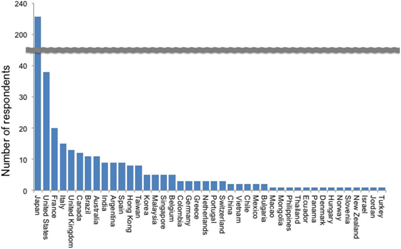
Ref. 1. Dagher I et Al. International experience for laparoscopic major liver resection.
J Hepatobiliary Pancreat Sci. 2014 Oct;21(10):732-6. doi: 10.1002/jhbp.140. Epub 2014 Aug 6.
Ref. 2. Troisi R, Montalti R, Smeets P, Van Huysse J, Van Vlierberghe H, Colle I, et al. The value of laparoscopic liver surgery for solid benign hepatic tumors. Surg Endosc. 2008 Jan;22(1):38–44.
Ref. 3. Troisi RI, Montalti R, Van Limmen JGM, Cavaniglia D, Reyntjens K, Rogiers X, et al. Risk factors and management of conversions to an open approach in laparoscopic liver resection: analysis of 265 consecutive cases. HPB (Oxford). 2014 Jan;16(1):75–82.
Ref. 4. Montalti R, Berardi G, Laurent S, Sebastiani S, Ferdinande L, Libbrecht LJ, et al. Laparoscopic liver resection compared to open approach in patients with colorectal liver metastases improves further resectability: Oncological outcomes of a case-control matched-pairs analysis. Eur J Surg Oncol. 2014 May;40(5):536–44.
LINKS: www.ihpba.org | www.e-ahpba.org | www.aphpba2015.com | www2.convention.co.jp/ICCLLS2014/en/index.html
Program
Click on an item to view details
Chairman: C. Bertrand – G. Sergeant
- 13:00 Wrap Up European Guidelines on LLS 2017 (M. Abu-Hilal)
- 13:30 Summary of the learning curves (B. Edwin)
- 14:00 How to do a safe and reproducible laparoscopic hepatectomy (B. Gayet)
- 14:30 How did my expertise evolve (GM. Ettorre)
- 15:00 My learning curve and the results I reached (S. Lopez-Ben)
Chairman: T. Chapelle – P. Malvaux
- 16:00 Right anterior and Central Hepatectomy (B. Gayet)
- 16:30 Anatomical Resections (HS Han)
- 17:00 Non-Anatomical Resections (M. Abu-Hilal)
- 17:30 Extraglissonian Approach: the Sugioka gates (G. Wakabayashi)
- 18:00 PS Segments: a real advantage if laparoscopically done? (R. Troisi)
- 18.30 Closing remarks (R. Troisi)
- Case presentations (O. Uytterbroeck)
- Anesthesia and LLS (J. Van Limmen)
- Basics in LLS (L. Carvalho)
- Live interaction with the proctors
Chairmen: V. Lucidi - M. D’Hondt
Chair: O. Detry - L. Carvalho
- 14:30 The way(s) to do a left lateral sectionectomy (S. Lopez-Ben)
- 15:00 Wedge antero-inferior segments (M. Abu-Hilal)
- 15:30 Right-Posterior sectionectomy (GM Ettorre)
Chair: R. Troisi - M. Janssens
- 16:30 Tips and tricks for a formal left hepatectomy (G. Wakabayashi)
- 17:00 Tips and tricks for a formal right hepatectomy (HS Han)
- 17:30 Tips and tricks for an oncological parenchyma-preserving resection (B. Edwin)
Proctors
- Go Wakabahyashi, AGEO Medical Center Tokyo - Japan
- Ho-Seong Han, Bundang Hospital, National University of Seoul - South Korea
- Mo’h Abu-Hilal, NHS Southampton, University of Southampton - UK
- Bjorn Edwin, Dep. for HPB surgery, Oslo University Hospital - Norway
- Roberto Troisi, Dept. of General HPB Liver Transplant Surgery, Ghent - Belgium
Introduction to the Thiel bodies and to the practical course
- Hilar approach
- Left lateral sectionectomy
- Left hepatectomy
- Right hepatectomy
- Minor (wedge) resections
- Surgical anatomy and US-guided ablations
- Suturing techniques
Live Operations
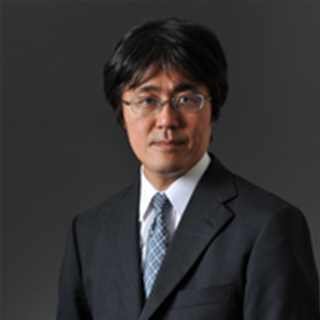
Prof. Osamu Itano
Keio University School of Medicine, Tokyo, JAPAN

Prof. Go Wakabayashi
Ageo Central General Hospital, Japan
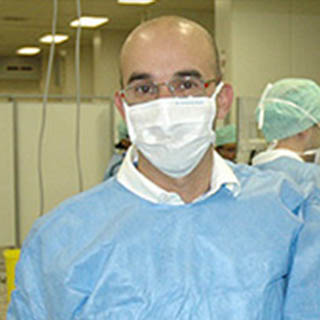
Prof. Mohammed Abu Hilal
Southampton University Hospital, UK
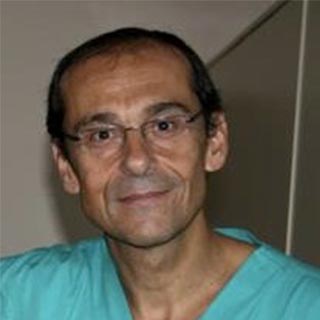
Prof. Luca Aldrighetti
Ospedale San Raffaele, Italy

Prof. Daniel Cherqui
Paul Brousse Hospital, France
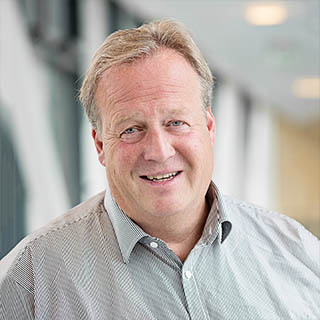
Prof. Björn Edwin
Oslo University Hospital, Norway

Prof. Neil Pearce
Southampton University Hospital, UK

Prof. Olivier Soubrane
Beaujon Hospital Clichy, France
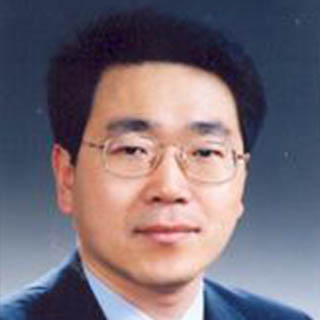
Prof. Ho Seong Han
Seoul National University Bundang Hospital
Tutors
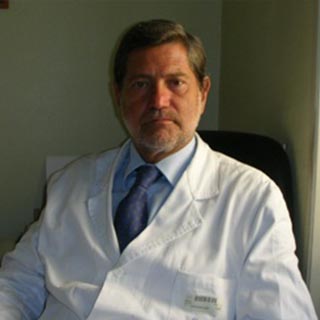
Prof. Giulio Belli
Loreto Mare Hospital, Italy

Dr. Alessandro Ferrero
Mauriziano Hospital Turin, Italy
Practical
Venue
The first day of the congress, Thursday September 14th as well as the second day, Friday September 15th, will take place at the Ghent University Hospital Medical school.
On Thursday afternoon, September 14th, the little bus will pick you up together with the other participants at the entrance hall of the IBIS Gent Centrum Kathedraal hotel at 1:00 pm and will bring you to the Ghent University Hospital. After the theoretical session, a shuttle to the hotel is provided.
On Friday morning, September 15th, the transport by bus is foreseen at 07:40 am from the IBIS Gent Centrum Kathedraal Hotel to the Ghent University Hospital, someone of the LOC will guide you to the meeting room. After this congress day, transport to the hotel will be provided.
On Saturday, September 16th the practical hands-on training will take place at the Anatomy Learning Center of the Ghent University Hospital Medical School. The pick-up service will expect you at 08:30 at the entrance hall of the IBIS Gent Centrum Kathedraal hotel.
Please let us know if you need a taxi after the hands-on course as transport by bus after the practical training isn’t provided.



Social program
Friday evening September 15th: ‘get together dinner’
Cultural Ghent
The location of the ALLIVER Masterclass is Ghent. You will spend the night here and also the scientific sessions will take place in this city. Only few places in West-Europe have such a rich history, culture and vivaciouty as Ghent.
Because of ‘The worship of the Lamb of God”, the Sint-Baafscathedral and the view from the Sint-Michielsbridge, the classical part of Ghent is definitely worth a visit. Despite its historical value, Ghent is on the other hand no lively museum, but a mix of the magnificant past with contemporary cultural expressions and various shopping opportunities.
This combination makes Ghent a vivacious city with an open unforced atmosphere, which is appreciated by the residents, students and many visitors.
The versatility of the city gets more and more international recognition. Ghent is proclaimed by the Unesco to ‘Creative City for Music’ and may call itself ‘veggie city’ of Europe.
Hotels
The IBIS Gent Centrum Kathedraal is situated in the Gent Shopping Center, close to the opera house. The hotel offers 134 air-conditioned rooms, including three for guests with reduced mobility. You can reserve a meeting and take advantage of the 24-hour bar, free WI-FI access or paying HSIA internet access and paying enclosed car park.
Address: Limburgstraat 2- 9000 Gent (Belgium)
Regarding your accommodation please specify your overnight stay at the registration form. Inge will organise your hotel booking after receiving your online registration form.
How to reach your hotel
At the Ghent Sint-Pieters railway station you can take tram number 1 at platform 2 (direction Wondelgem Industrieweg). Leave the tram at 'Savaanstraat'. This stop is in front of the IBIS Gent Centrum Opera hotel where we have booked your overnight stay.

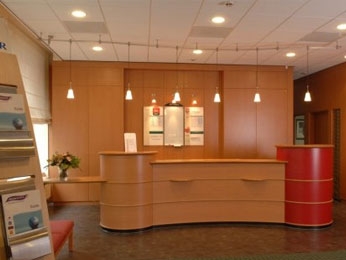
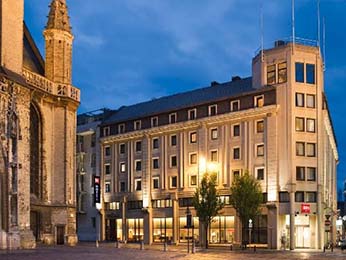
Travel
Arrival in Brussels
We suggest to take the train from Brussels Airport (airport train station is located below the terminal (basement level -1)) to Gent-Sint-Pieters station. A taxi is also possible, but will cost more and lasts longer (frequent traffic jam). You can book your round-trip ticket in advance through the NMBS website.
Arrival in Brussels South Charleroi
From the Brussels South Charleroi airport you can take a shuttle service to the Brussels Midi (South) railway station. From this railway station you can take the train to the Gent-Sint-Pieters-Station.
For more information you can check the website.
Passengers -> Access & Parking -> Brussels city shuttle or Passengers -> Access & Parking -> By rail - bus
Additional short trips
Additional short trips to Brussels, Antwerp, Paris, London, Amsterdam, ... Can easily be organised. A PUNTO will be happy to assist you if needed.
A PUNTO
Organisation with care
Mobile +32 (0)479 750 253
E-MAIL: inge@apunto-events.be
Do you need more information about your stay in Ghent?
Please do not hesitate to contact us. We will try to find an answer to all your questions.
Wetlab
Thiel Embalming














Media
October 2014
June 2014
- ANESTHESIOLOGY MANAGEMENT LLR
- Clinical case 1 - Prof. Aldrighetti
- Prof. Aldrighetti - evolution of the techniques
- Prof. Aldrighetti - HCC
May 2016
Centre learning curve
Our initial experience dates back to 1998. It is only since 2003 that the laparoscopic liver surgery has been implemented on a routine basis (1).
Until January 2014, 453 pure laparoscopic liver resections (including 46 major hepatectomies and 8 Living Donor Hepatectomy for A2ALDLT) have been carried out at the Ghent University Hospital and officially reported to the 2nd International Consensus Conference on Laparoscopic Liver Surgery (ICCLLS) in Japan (October 2014) (2).
The evolution of the LLR activity as well as the switch between open and laparoscopic procedures is hereby displayed (Graphic 1 and 2) (3).
With the aim to further explore the potential of robotic assistance in LLR we performed the first Belgian robotic-assisted liver resection in February 2013. To date, a study is running to understand the added value of robotics in this field for resections of Postero-Superior segments (4-7).
Single surgeon learning curve
With the aim to understand what is the real Single Surgeon Learning Curve in LLR we first classified the difficulty of LLR according to the opinion of 5 different expert laparoscopic HPB surgeons from different centers each, assigning to each resection a difficulty grade (DG). This was ranging between 1 to 11, according to the segmental anatomy and indication for LLR.
Wedge resections for the anterior segment 3 and 4b were classified as the easiest procedures performed (grade 1). On the other hand, the fully laparoscopic liver resections (Left Hepatectomy, or Left Lateral Sectionectomy) for living donor liver transplantation were classified with the highest grade (11) due the complexity of the procedure and the particular indication. This scale was used to evaluate the changing of the indications and of the procedures performed during the SSLC. According to the overall mean value of the DG (average 4.6 in all the procedures) and analyzing the DG trend during the years, 3 different time periods were defined: period 1, n=91 cases; Period 2, cases from 92-159; Period 3, from case 160-341. The average DG was 3.8 (the lowest), 5.3 (the worse) and 4.7 (the stability) respectively for period 1, 2 and 3.
These three periods were successively analyzed and related to: conversions, estimated blood loss (EBL) and operative time (OT). The results were evaluated using the risk-adjusted CUSUM.

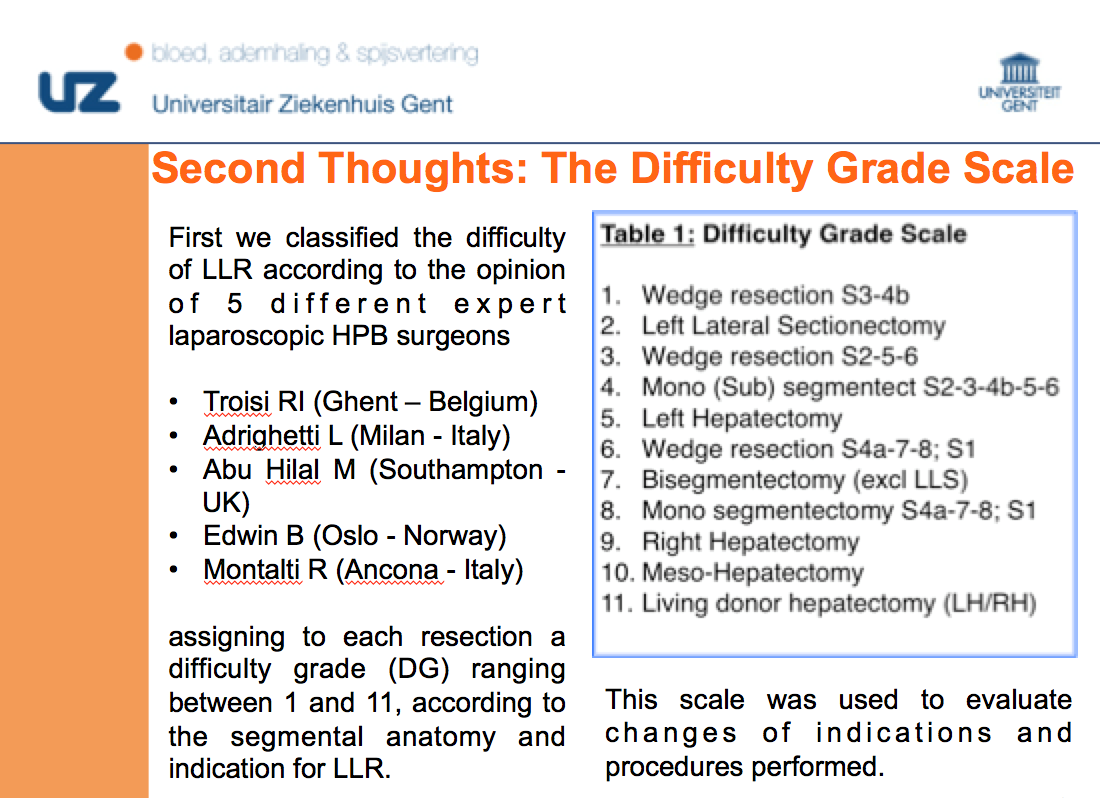
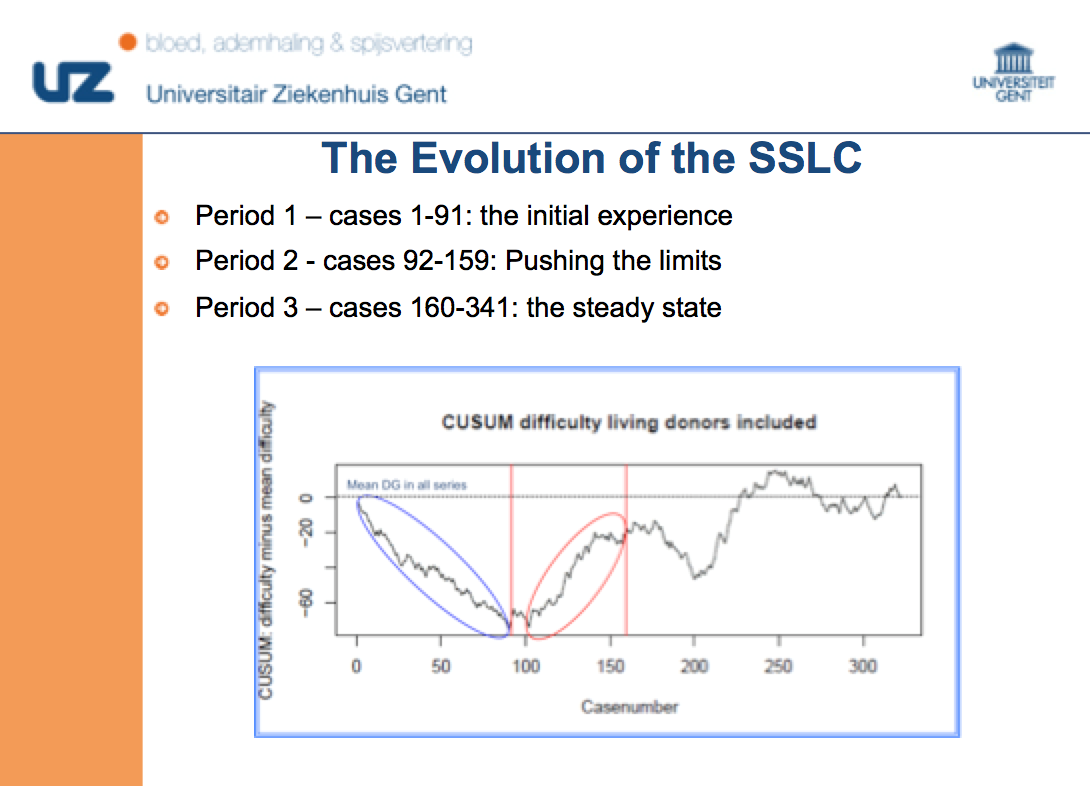

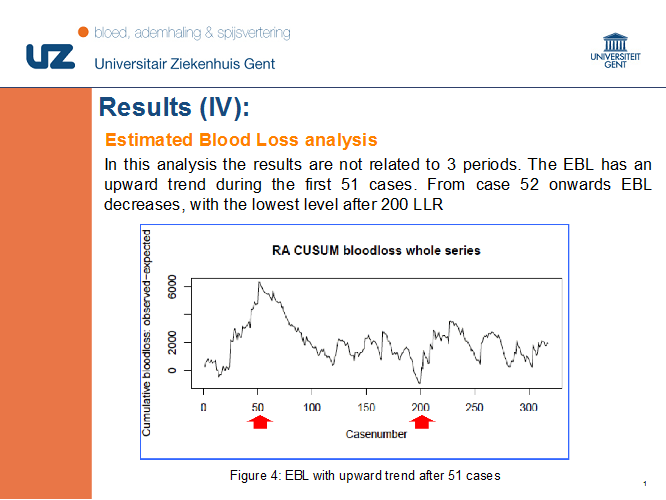

1. Hesse UJ, Troisi R, de Hemptinne B. Atypical laparoscopic liver resection. Zentralbl Chir. 1998;123(5):491-4.
2. Dagher I et Al. International experience for laparoscopic major liver resection. J Hepatobiliary Pancreat Sci. 2014 Oct;21(10):732-6. doi: 10.1002/jhbp.140. Epub 2014 Aug 6.
3. Troisi RI et Al. Risk factors and management of conversions to an open approach in laparoscopic liver resection: analysis of 265 consecutive cases. HPB (Oxford). 2014 Jan;16(1):75-82. doi: 10.1111/hpb.12077. Epub 2013 Mar 12.
4. Troisi RI et Al. Robot assistance in liver surgery: a real advantage over a fully laparoscopic approach? Results of a comparative bi-institutional analysis. Int J Med Robot. 2013 Jun;9(2):160-6. doi: 10.1002/rcs.1495. Epub 2013 Mar 21
5. Montalti R et Al. Robotic Versus Laparoscopic Hepatectomy: What Is the Best Minimally Invasive Approach? Ann Surg. 2014 May 15. [Epub ahead of print]
6. Montalti R et Al. Outcome of robotic versus laparoscopic hepatectomy: a systematic review and meta-analysis. (Submitted 2014)
7. Montalti R et Al. Robotic versus laparoscopic liver resections of posterosuperior segments of the liver: a propensity score-matched comparison. (Submitted 2014)
Fellowship
European Fellowship in Laparoscopic Hepatobiliary Pancreatic Surgery
A. Background: Laparoscopic liver surgery is gaining wide acceptance in the HPB community and the next few years are expected to see more expansion involving the majority of HPB centres. However formal training programs in the laparoscopic approach are very rare and if they exist, they do not have any formal recognition. Many would agree on the need for formal training opportunities and standardized training programs.
B. Aim: to establish a formal training program involving a number of recognized high volume laparoscopic European centres to offer formal training in laparoscopic HPB and techniques including, organ mobilization, vascular dissection, parenchymal resection and haemostasis. Thus to ensure a safe expansion of the laparoscopic approach in major hepatobiliary pancreatic centres
C. Who is eligible? The program is directed to HPB trainees who have completed their general surgical training and at least 2 years of specialist HPB training. The trainee should have developed good experience in open liver and pancreatic surgery in addition to advanced skills in general laparoscopic surgery.
D. Duration: the fellowship duration is of 24 months divided in 3 periods to be spent in 3 different centres. Ghent (R. Troisi), Oslo (B. Edwin), Southampton (M. Abu-Hilal) and Milan (L. Aldrighetti) are at this moment seeking fellows.
E. Syllabus: During the fellowship the fellow will have the opportunity to develop knowledge as well as operative skills in the laparoscopic management of a variety of HPB conditions. Eventual extension of the time period of the single centre fellowship can be considered upon the candidate’s request.
1. Knowledge: the fellow should develop good understanding of:
- Concepts and principles in the management of HPB lesions
- The surgical indication for laparoscopic management
- The contra indication and limits of the laparoscopic approach
- The surgical strategies available to deal with different scenarios
- The radiological preoperative assessment of the disease
- The laparoscopic instrumentations used during liver resection
- The role of intra operative ultrasound
- Strategies and options in achieving haemostasis and suturing skills.
- The management of intra and post operative complications
2.Surgical SKILLS: The fellow should develop proficiency in a number of basic and advanced laparoscopic skills:
- Port positioning per specific surgical resection
- Patient positioning
- Intra operative laparoscopic ultrasound
- Pringle’s manoeuvre
- Left lobe mobilization
- Liver retraction and planes preparation
- Superficial dissection of liver parenchyma
- Intra parenchymal structure identification and control
- Use of endoscopic staplers
- Specimen removal
- Deep parenchymal dissections
- Completion of left later sectionectomy
- Segmentectomy anterior segments
- Metastasectomy anterior segments
- Mobilization of the right lobe
- Mobilization of the liver from the vena Cava
- Laparoscopic suturing
- Extraparenchymal vascular control
- Primary surgeon or first assistant in at least 3 major resections
- First assistant in abdominal organ procurement and deceased cardiac donations (First assistant in full size and partial liver transplantation)
F. Assessment and Monitoring: Each Fellow will have a local mentor who will assess his progress monthly and issue a formal assessment at the end of the period spent in his centre. In addition each fellow will be assigned to a tutor who will oversee the whole training period. At the end of the fellowship the trainee will sit a formal oral exam, where his/ her knowledge will be assessed by three of the master committee. He will also be asked to present a video of a laparoscopic procedure he performed and discuss different aspects of the procedure.
Research: During the fellowship, one day a week will be allocated for research and academic activity. The fellow and will be encouraged to establish multicenter research projects and submit dissertation thesis before sitting his exam. The thesis should include enough material for at least one publishable manuscript.
G. Certification: A fellowship certificate in laparoscopic HPB surgery signed by the mentors, the tutor and the president of the A-EHPBA President (or the head of the training committee) will be issued at the end of the fellowship
H. Salary: At that moment no salary will be provided but negotiations are busy with the major companies to cover a part of the expenses of the candidates during the training period.
I. Training centres Six training centres and six tutors (master committee) have been included in the organization and set up of the program
- Mohammad Abu Hilal- Southampton, UK
- Roberto Troisi – Ghent, Belgium
- Ibrahim Dagher- Paris, France
- Bjorn Edwin- Oslo- Norway
- Luca Aldrighetti – Milan- Italy



































